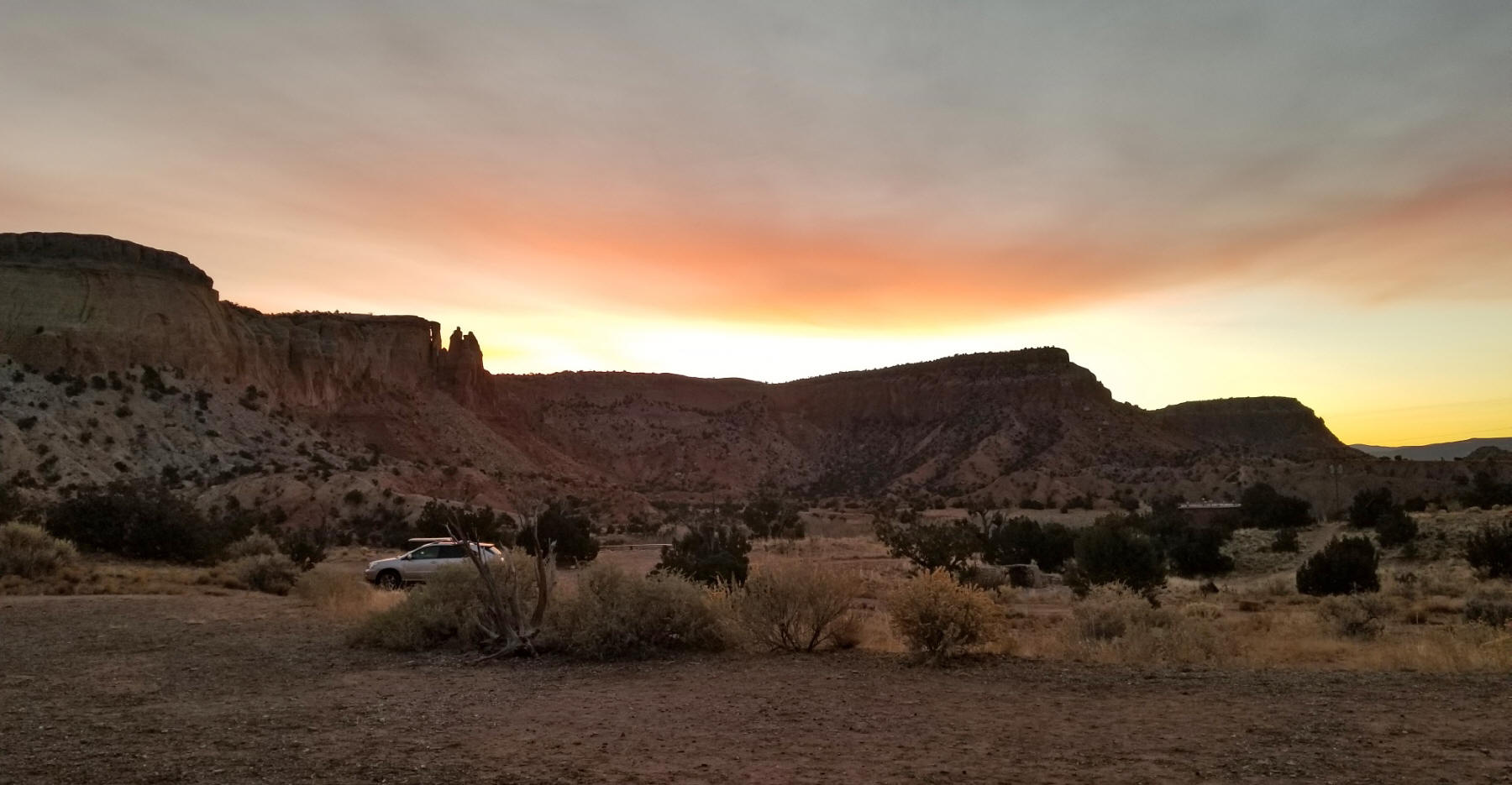|
Digging up Dirt: Gray Fossil Site
Story and photos
by Kathleen Walls
They are uncovering treasures in
Washington County, Tennessee. It's not the kind with gold
and silver, but it's more important because it's telling us
what life was like here in the early Pliocene Epoch between
4.5 and 4.9 million years ago.
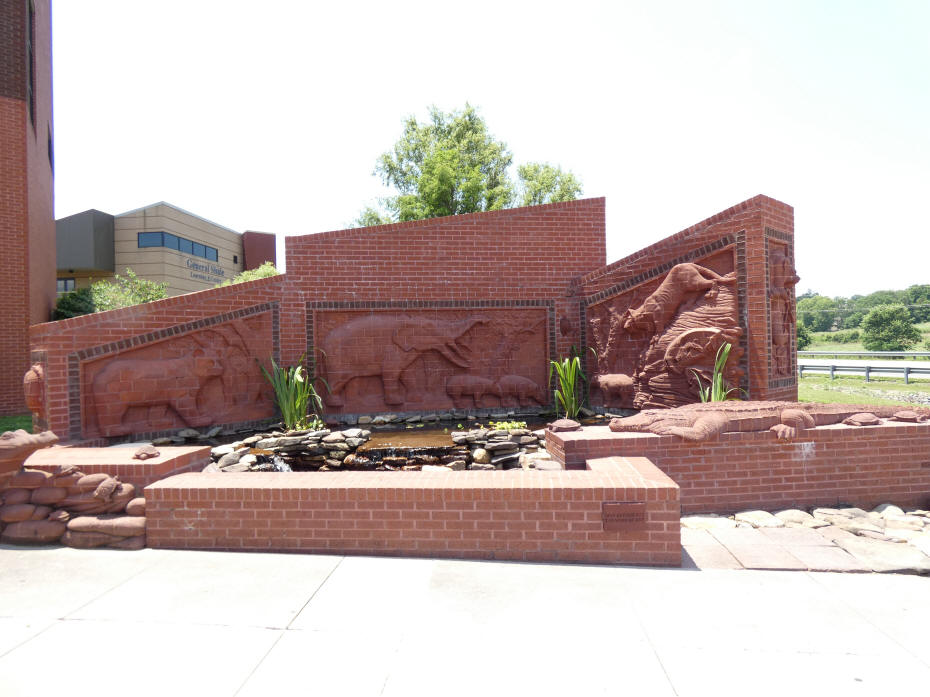
Gray Fossil Site
Gray Fossil Site in Gray, a suburb of Johnson City, was
discovered in May 2000 when the Transportation Department was
grading a big hill to put in a road. I visited recently and met
with Matthew Inabinett, the paleontologist who is the
Collections Manager at the site. He told me about the site and
took me around for an in-depth visit. He told me how it began.
"They took about 40 feet of what we call overburden, just
overlying sediments that are not related to the site, off the
top of this hilltop, and they found this black clay unit."
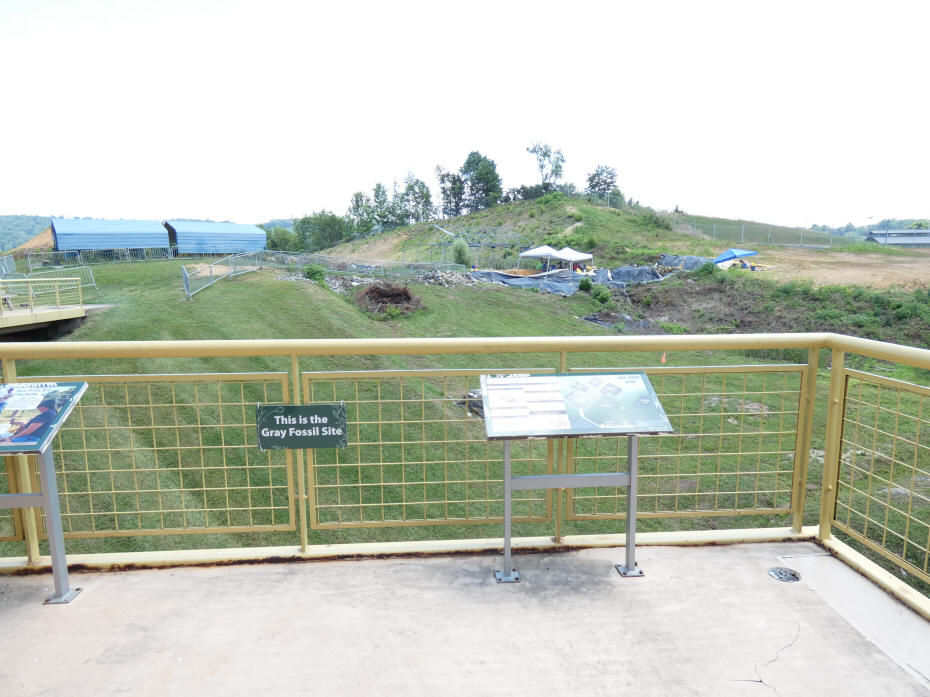
Mathew explained that it was not
scientifically earth shattering yet. "This really sticky, wet,
black clay was something with these nice layers and it was
nothing that any of the geologists had seen around here before.
So road construction kind of paused for a time while geologists
were running structural tests basically to see if we could build
a road on this or is it just going to give way in five years or
something. Is this going to be stable? And while the
construction was paused, fossils were found."
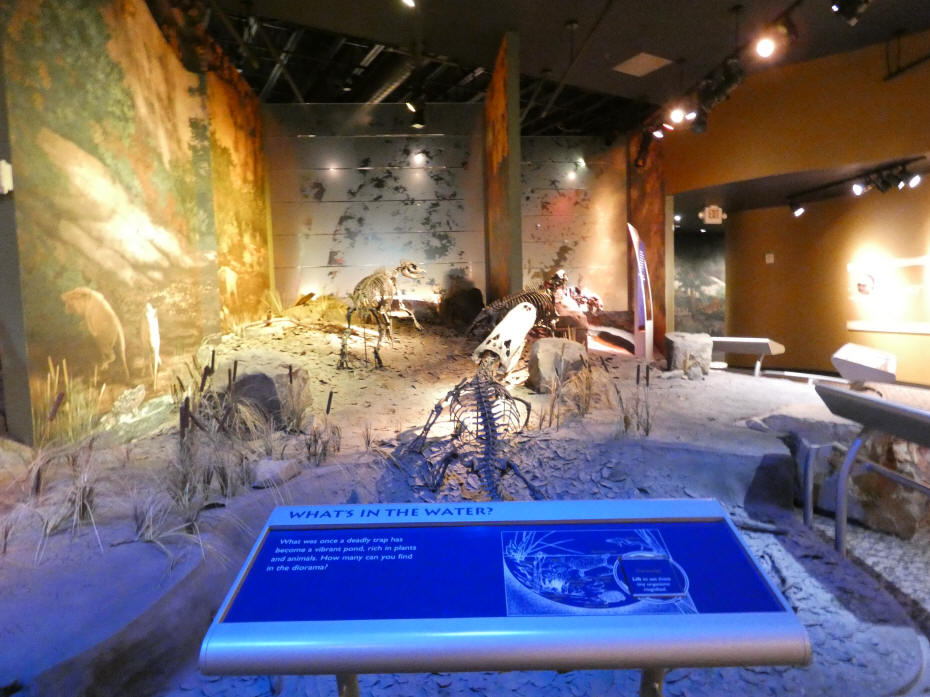
They found mastodon and tapir fossils. That
made it important. Still, at first, they believed it was an Ice
Age site. But when they found an alligator skull, they knew it
wasn't the latter part of the Ice Age, because it was too cold
for alligators 20,000 years ago during the cold period of the
Ice Age.
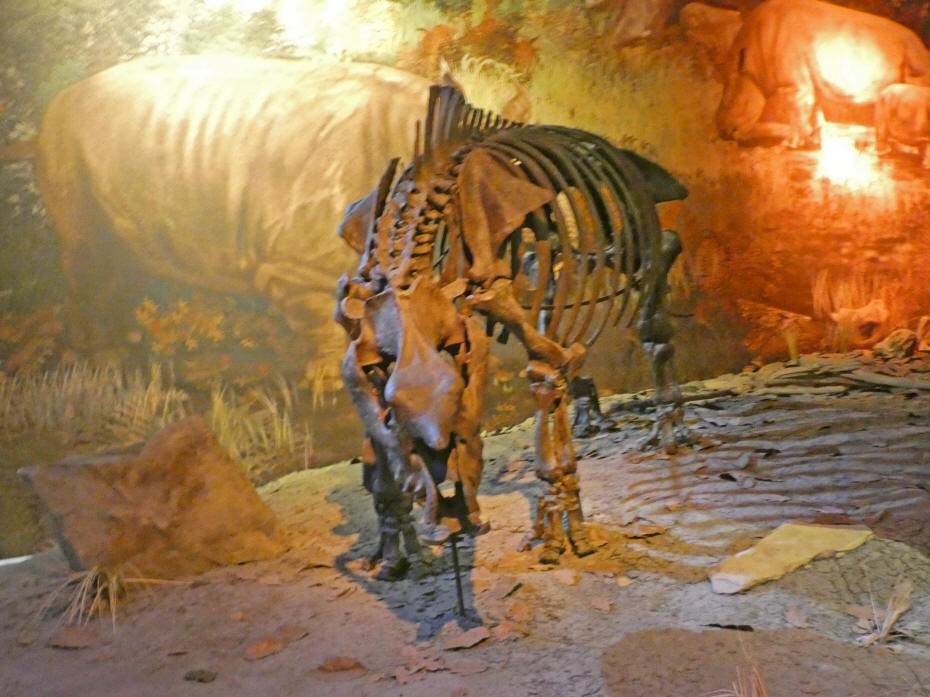
It was when they found the first complete
rhino in 2004 at the site, everything but one toe bone, they
knew it was much earlier. Matthew said, "This animal here was
the clincher that it was a Miocene or Pliocene age.”
At one time rhinos were common across much
of the United States, but four and a half million years ago,
rhinos disappear across the whole continent.
I asked "Why?"
He said, "Presumably, we know this is the
time when North America is starting to get cooler and drier.
Forests are giving way to a more open country. A lot of
grassland habitats are developing." He explained how this fossil
was such an important discovery. "We think today that these
rhinos at Gray are some of the very last ones in North America
right before they die out. And what's different about this rhino
compared to a lot of its relatives, it's what we would call a
barrel-bodied rhinoceros, teleoceros. There's several different
species of them and this particular species found at Gray is
unique to the fossil site. It hasn't been identified anywhere
else."
That is a pretty big WOW! to me, and a good
reason to visit Gray Fossil Site. The site was once a pond where
these prehistoric animals would come to drink, so there are many
different kinds of fossils here. Matthew took me to view the dig
and research areas of the site. You can see the same when you
visit and take a tour.
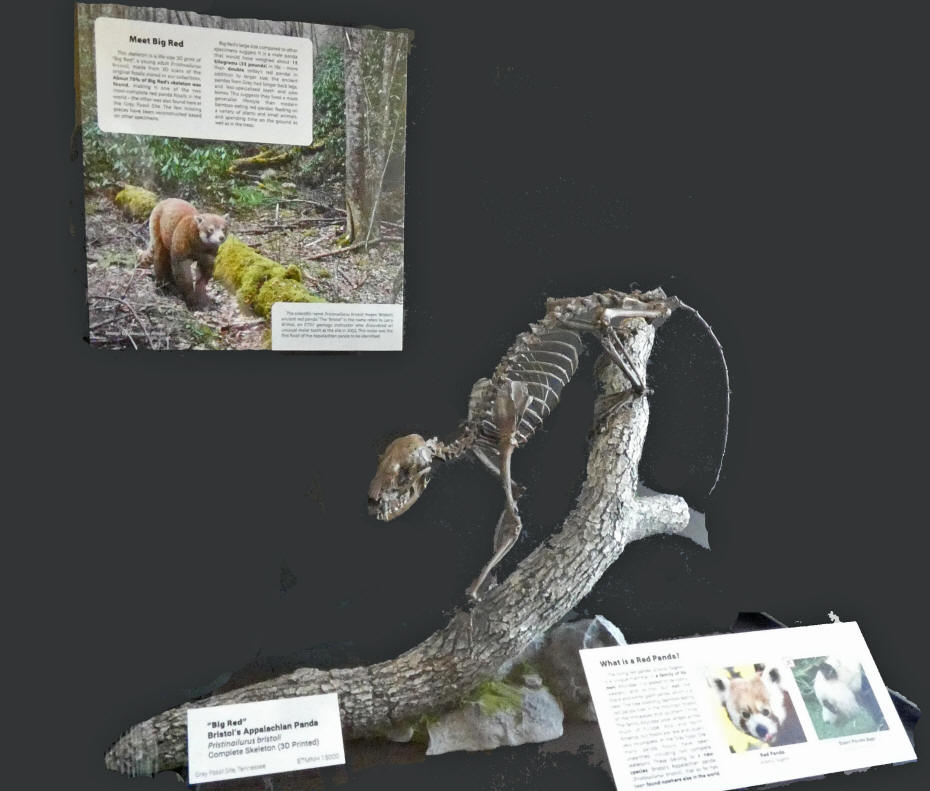
One item we saw on display was Big Red, a
young adult male of an extinct type of red panda called
Pristinalaris pristilii, which has only been found here at
the Gray Fossil Site. He would have weighed about 30 to 35
pounds. The example on display is a model as the real bones are
in storage to protect them.
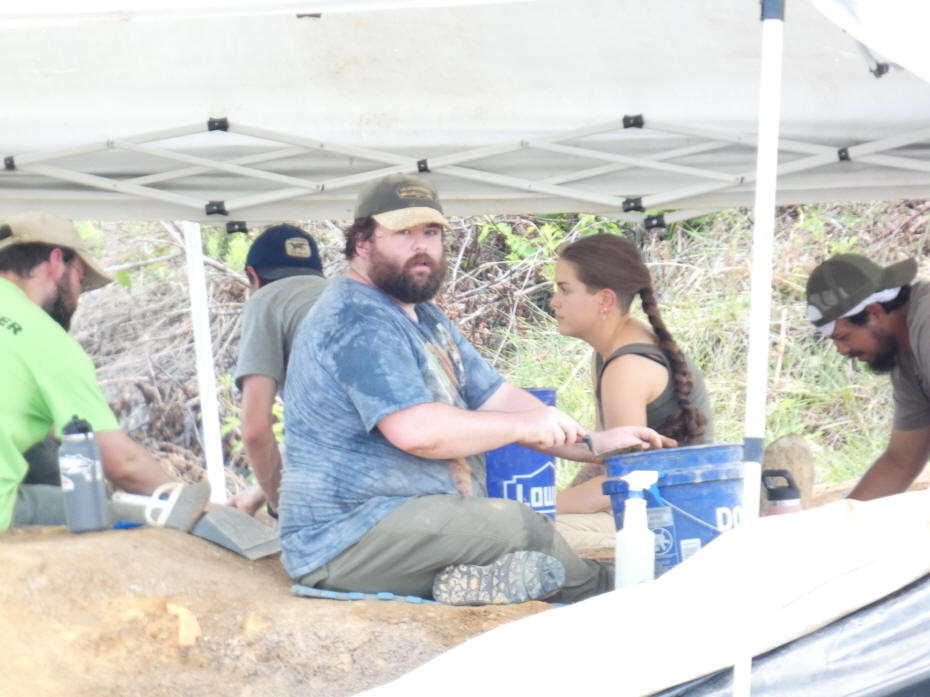
We viewed the dig where workers were
carefully digging through one small section. Then we moved to
the washing troughs.
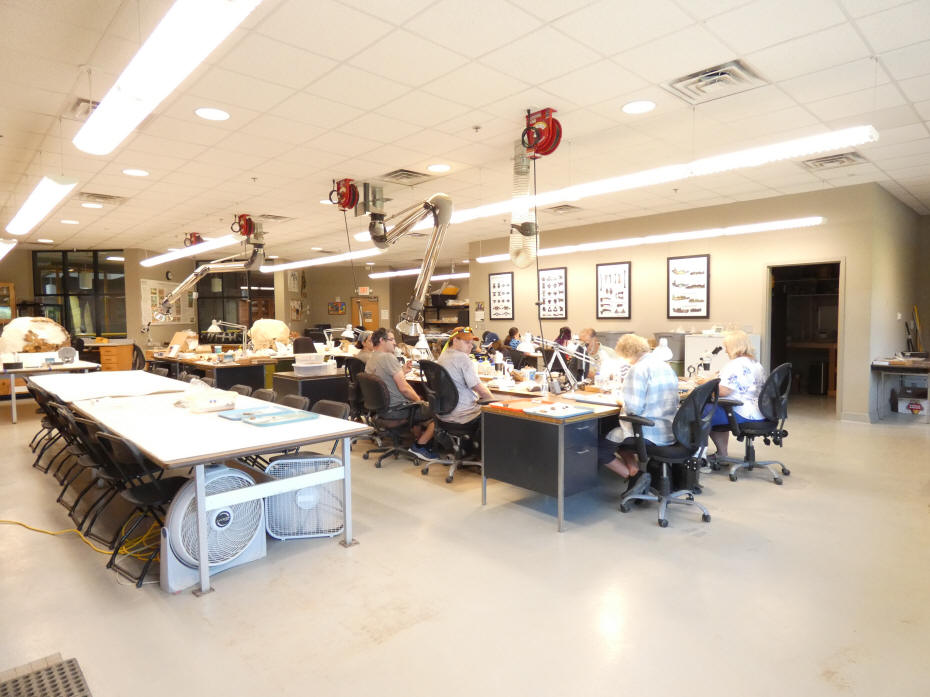
Next stop was the prep lab where scientists
were cleaning up some of the fossils that come out of the ground
and beginning to process of putting the complete fossil
together. Usually complete fossils are not dug at one time, so
they use a special glue that is reversible. When a new piece is
found, they dissolve the glue at that place in acetone and then
add in the new piece. They are also the first fossil prep lab to
use 3D printing in archival materials technique as part of the
preparation. If they find one side of a skull, they scan it on a
3D scanner, flip it over and printed it out, so it's a mirror of
the original. They use the same material as the glue.
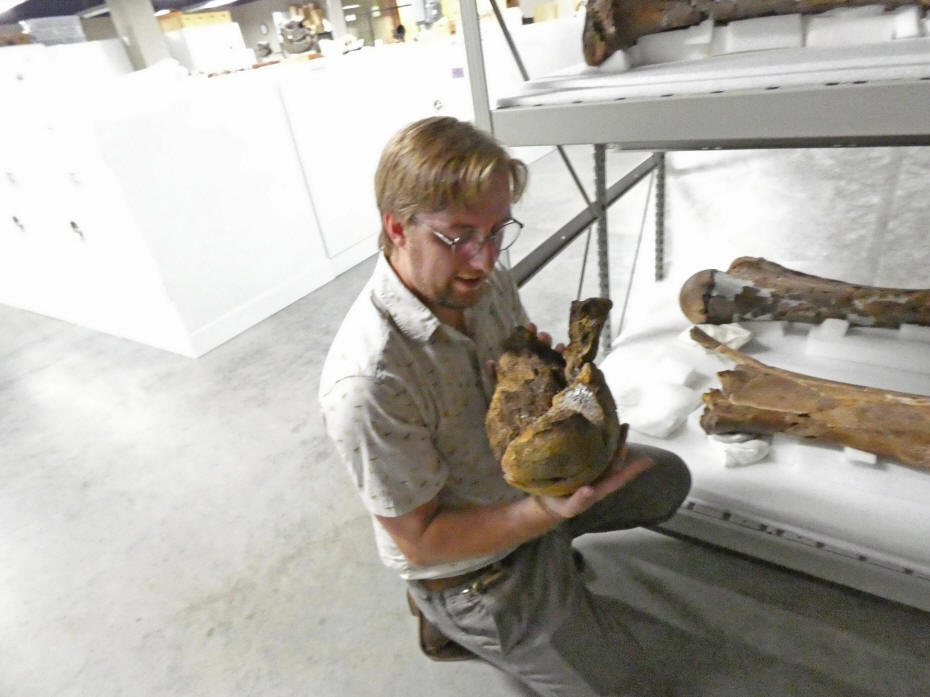
We visited the storage section where all
the original fossil remains are stored. I got to see the entire
set of bones of the mastodon. They took up an entire section.
Hands On! Discovery Center
The Hands On! Discovery Center first opened in August 2007.
It's a great tool to help both children and adults understand
the fossil site. Sarah gave me a tour of the museum and the
adjourning garden and wing where children's camps are held.
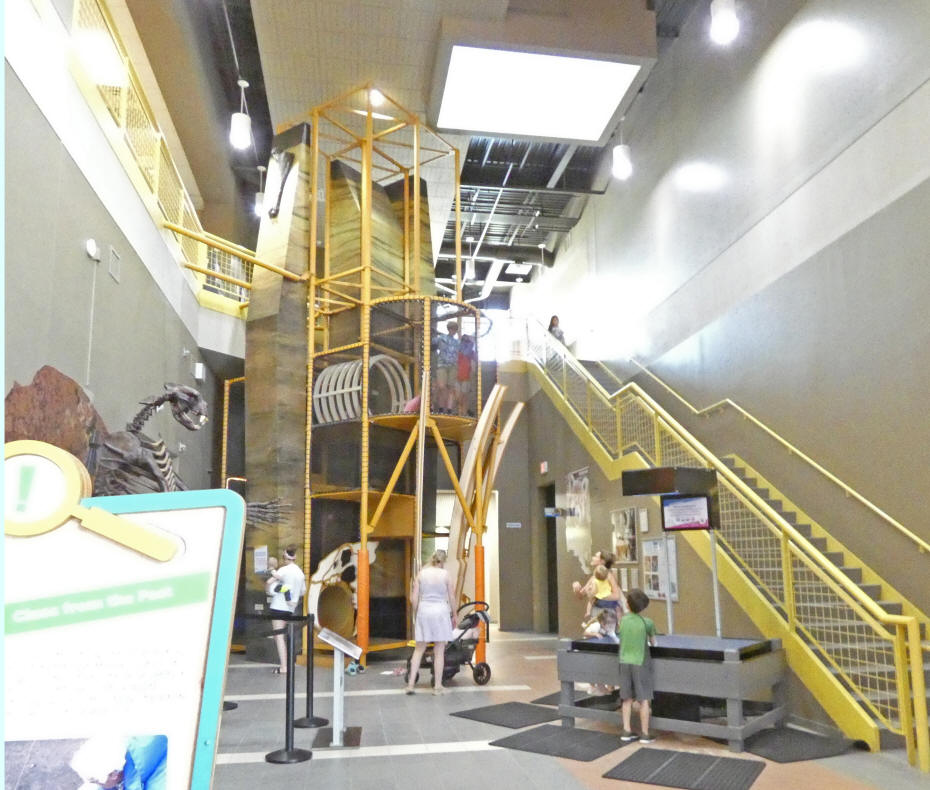
Paleontology Climbing Tower, a three-story
interactive tower, is one of the first things you see on
entering the museum. Here you can discover the fossils found at
the site on each level. You can see and touch actual 3D
replicated models of the fossils. This structure is the only of
its kind in the United States.
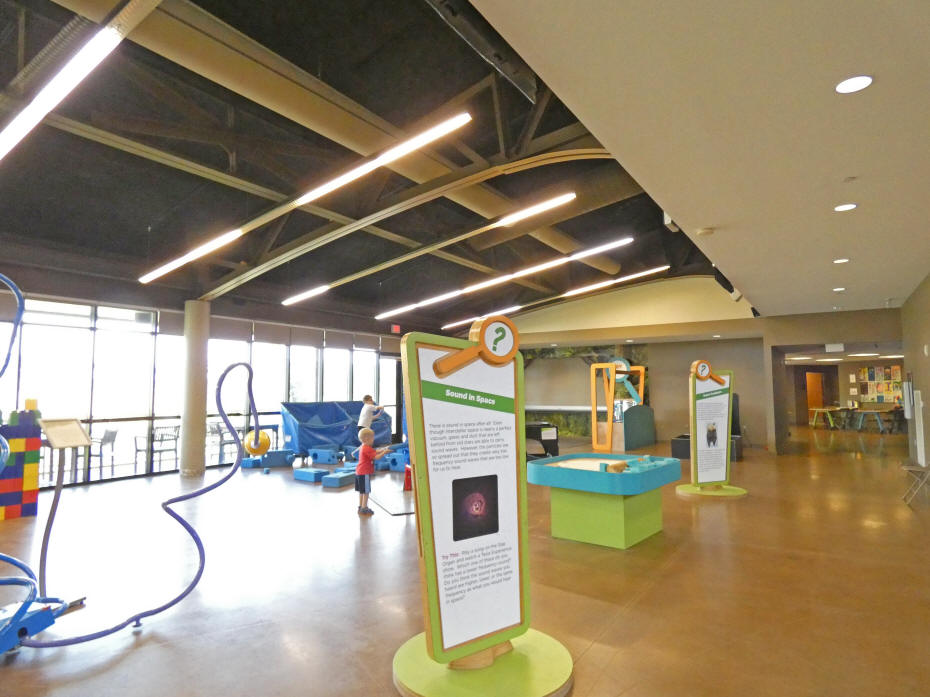
The Miocene Exhibit Hall showcases samples
of the kind of fossils being unearthed at the dig site. There's
a Discovery Lab where you can do a hands-on experiment. The
Scheu Family Exhibit Hall & Art Studio in the General Shale
Learning Center hosts leaning camps for children.
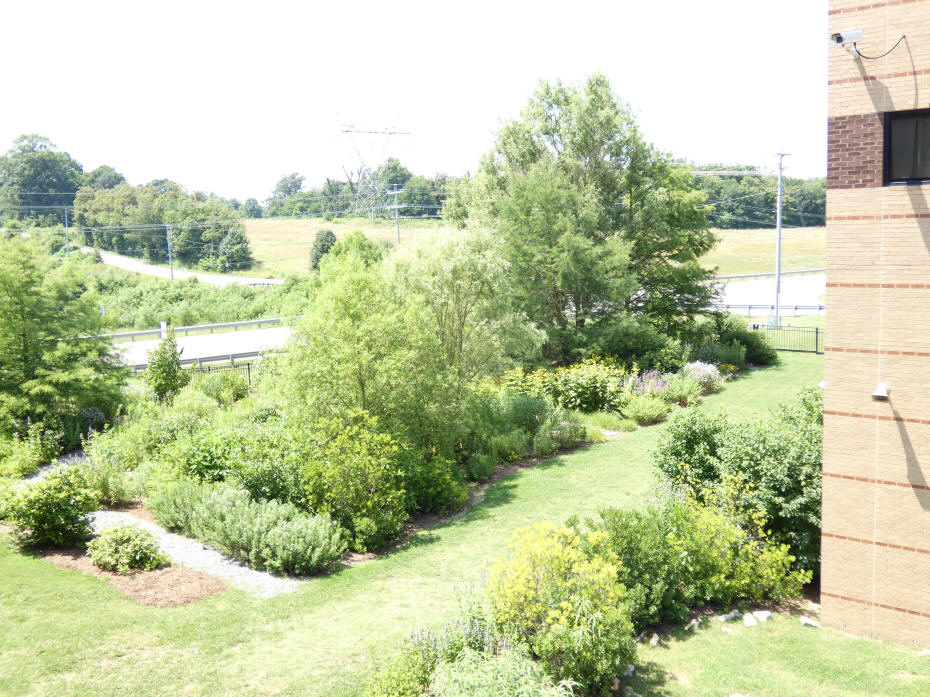
The Discovery Garden is a shady haven of
native trees, shrubs, grasses, vines, and flowering perennials.
You'll find butterflies and other animals there. Many of the
plants in it were also found here five million years ago when
this site was a watering hole that attracted the animals that
are being uncovered today. There is also an outdoor fossil
replica dig pit and two Seed to Table exhibits.
There are not a lot of places you can see
an active dig site in the US, so plan to experience Gray Fossil
Site and the Hands on Discovery Center for yourself.
Public
Disclosure Please Read FTC has a law
requiring web sites to let their readers know if any of the
stories are 'sponsored' or compensated. We also are to
let readers know if any of our links are ads. Most are not.
They are just a way to direct you to more information
about the article where the link is placed. We have several ads
on our pages. They are clearly marked as ads. I think
readers are smart enough to know an ad when they see one but to
obey the letter of the law, I am putting this statement here to
make sure everyone understands. American Roads and Global
Highways may contain affiliate links or ads. Further, as their
bios show, most of the feature writers are professional travel
writers. As such we are frequently invited on press trips, also
called fam trips. On these trips most of our lodging, dining,
admissions fees and often plane fare are covered by the city or
firm hosting the trip. It is an opportunity to visit places we
might not otherwise be able to visit. However, no one tells us
what to write about those places. All opinions are 100% those
of the author of that feature column.
| 
